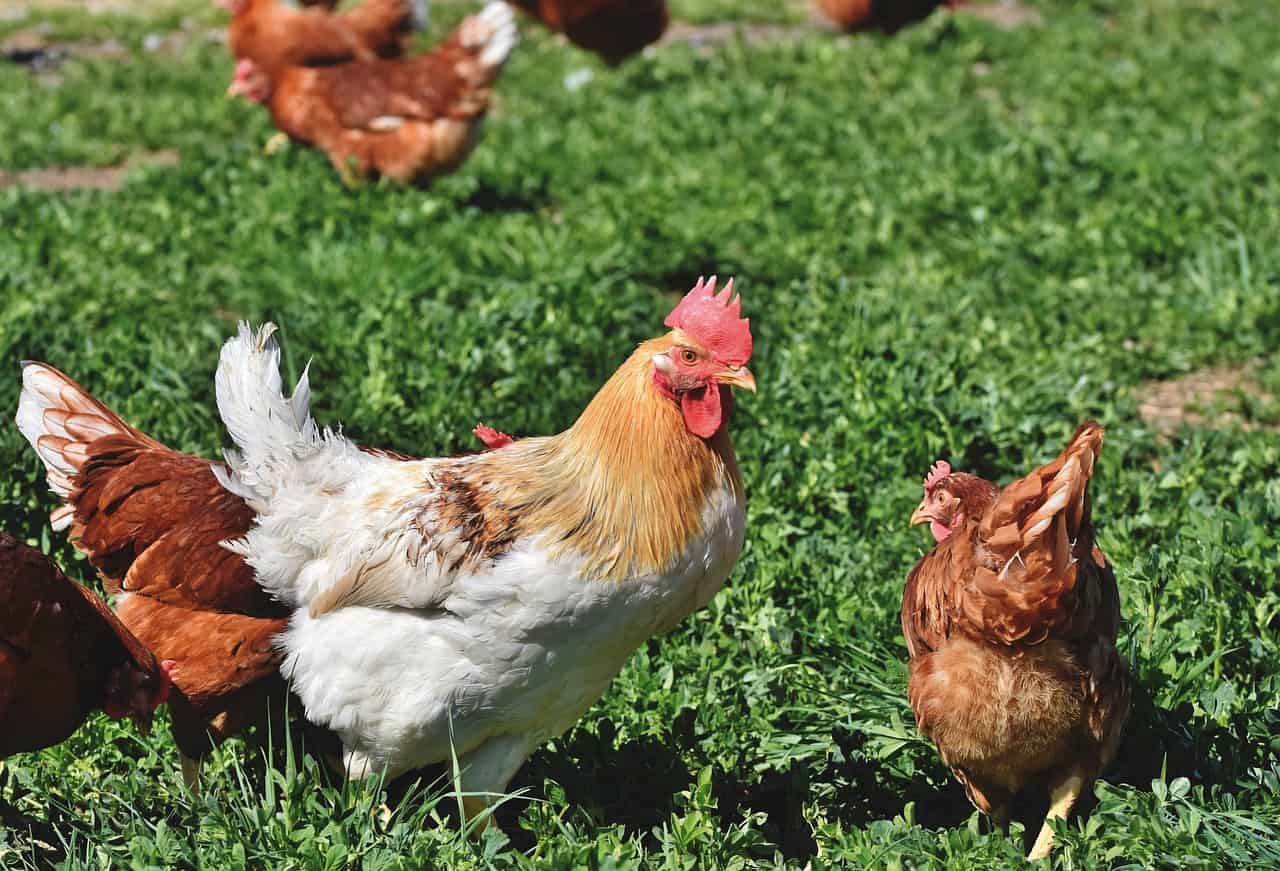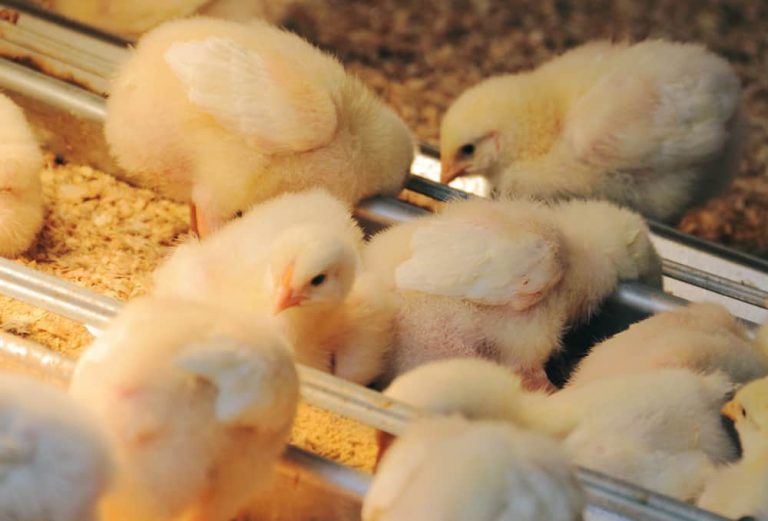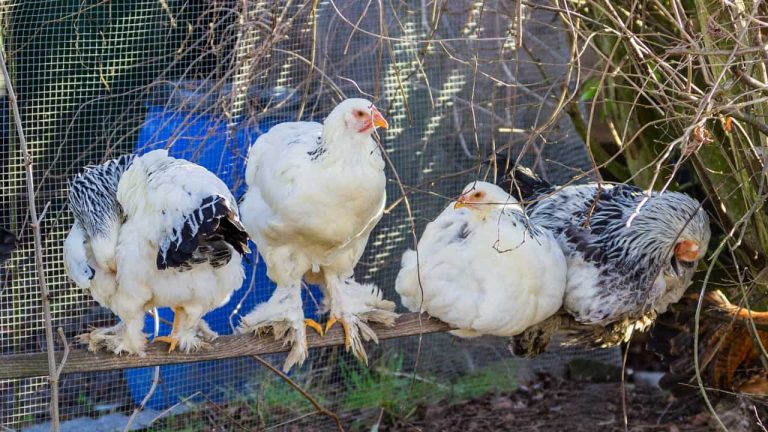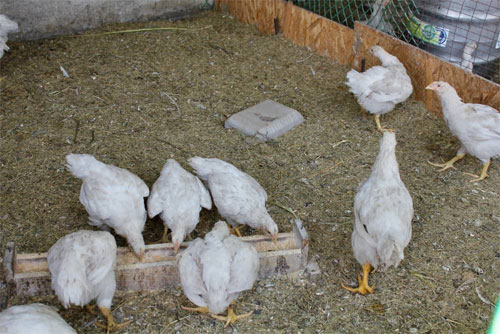Welcome! If you have decided to start rearing your own chickens and enjoying all the benefits they bring, welcome to the club!
Keeping chickens in the backyard or garden can seem a bit daunting, but a little knowledge goes a long way. This essential guide to rearing chickens will give you all the info you need to get started. From cool coops to chic chicks – we have got it all.
You may be thinking that there’s no way you can farm your own chickens on your small property, but you could be surprised. You do not need many birds, a large coop, or a lot of space to get a few eggs every week.
And you will get some fine feathered friends into the bargain.
A lot of people think the only reason for keeping chickens is for the eggs. Sure, there is nothing quite like a fresh, home laid egg on your plate. You can be sure the hen that laid it is well kept, well-fed, happy, and healthy. Not a battery farm or disease insight.
But chickens are so much more! They quickly become family pets. You will soon know them by sight, give them names, and be amused at their inquisitive behavior. They are great for children, teaching them about the food chain, animal husbandry, and nature.
And if you can bring yourself to do it, the bird itself can make a fine meal!
But yes, there will be poop, lots of poop, and mess. Scratched up gardens and tipped over water bowls. But you will soon learn how to keep these things to a minimum. And the good points always far outnumber the not so good.
“OK, I’m sold. Where do I start?” I hear you say.
Well, first choose your birds.
Contents
What breed of chicken should I get, and how many?
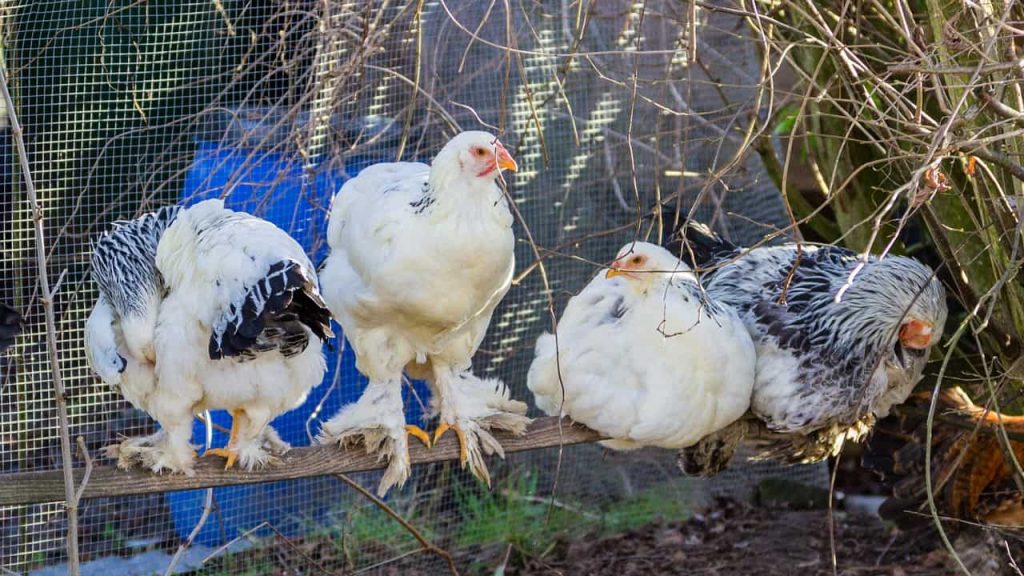
The choice of breeds out there can seem bewildering, but it’s pretty easy.
Are you looking for a plentiful supply of eggs, or some fashionable, good-looking birds?
Generally speaking, the prettier the bird, the fewer eggs it lays. Big layers are often plain brown or red in color and look like your standard chicken. But other breeds can be all sorts of colors, with bright feathers and big coxcombs. They may just lay a few fewer eggs.
When you start shopping around you may find that the breeders have done some of the selection work for you. Good breeders know what people want. And most people want the best of both worlds. A good-looking bird that lays plenty of eggs. Or a few big layers mixed in with some unusual breeds to make the coop look a bit fancier.
The hybrid hens and the Rhode Island Red are plainer in appearance but are heavy, regular layers. A couple of these will bring eggs nearly every day.
The White Leghorn and Sussex are a lovely white color and can lay up to 200 to 250 eggs a year.
Maran, Hamburg, Ancon, and Barnevelder are smaller, pretty hens that will lay fewer eggs but look beautiful strutting around the yard. Expect about 200 eggs a year from these breeds.
Remember, no breed lays every single day, and nearly all breeds will start to lay fewer eggs after 3 years old.
Whilst on the topic of eggs, not all eggs are a boring brown color! A great way to jazz up your egg collection is to choose breeds that give different colors of eggs.
Ameraucanas, Araucanas, and Cream Legbars lay eggs in lovely shades of blue. Sussex and Leghorn Whites lay white eggs. An Isbar even gives green eggs!
But although a colorful array of eggs in the basket is very tempting you must give thought to your climate. Do some research and choose a breed that will thrive in your area.
The Plymouth Rock and Silkie are known to do well in colder areas, while Rhode Island Red and Welsummer can manage some heat.
What sport of coop do I need?
Now that you have decided on a breed (or five!) and know how many birds you want to keep, you will need to house them.
Each bird will need around 3 square feet inside the coop and between 8 and 10 sq ft of open ground outside. Use this to determine the size of the coop and the run area.
Some chicken owners let the birds roam free-range over large areas but it is a good idea to have an enclosed run around the coop so they can stretch their legs in the safety of the enclosed run. Especially if you are going away for a couple of days or someone less experienced is looking after them while you go on holiday.
You can make your own coop or buy a ready-made one from a retailer, but there are several things to look out for to make sure you get a good one.
First, predator proofing. Coyotes, raccoons, wildcats, etc, the list goes on. They will all be sniffing around your coop at some point. And those long nights give them plenty of time to find a way in. Keeping your birds safe is your first priority.
Sturdy materials, solid construction, strong chicken wire or hardware cloth, and a good lock or gate latch are all essential. The wire or cloth should be flattened out on the ground around the run and coop for at least 2-3ft. This should prevent even the most determined predators from digging under the wire.
Doors are often a weak point as they need to open and close. If we make it nice and easy for us to open we might be making it nice and easy for predators. Especially if we forget to close the door! There are strong predator-proof automatic doors available on the market that make it simple. They can be set to open and close at certain times. That means we don’t have to get up early to let the birds out. And we can’t forget to lock them up at night.
Every coop needs nesting boxes. Somewhere for the birds to go and lay their eggs. That’s what the chickens are there for, right? One box per 5 to 6 birds is recommended. And the boxes should be easily accessible from outside the coop to make egg collecting nice and easy.
Roosting perches are also high up the list of things the coop needs. Chickens like to perch up high off the floor at night. It’s an instinct thing, naturally, they would have perched up trees overnight to keep them safe from ground predators.
About a foot of roosting space per bird should do. Make sure it’s just wide enough for their feet to get around, and strong and safe enough for all the birds to get onto at the same time.
Now comes the messy business. Chicken poop, a lot, and don’t care where they do it. Nothing is sacred, so make sure everything in the coop, and outside, is washable and cleanable.
The floor of the coop is going to get hit a lot. So make sure it is easy to remove and clean. A sliding tray or boxes under the roosting bars is really useful. Straw, wood shavings, or paper on the floor can make manure removal all the easier.
Finally, ventilation and weatherproofing. Air needs to circulate to keep the girls cool in the heat and to keep smells down to a minimum. But the coop also needs to be warm in winter.
Good hygiene is vital to the well-being of the birds. A warm coop and plenty of poop is a perfect recipe for bacteria and disease. Regular cleaning and changing of dirty litter need to be done almost every day.
Consider having sliding windows or vents that can be opened and closed. Heaters can be used in very cold weather to maintain an even, comfortable temperature. There are many different models on the market and they are nearly all very energy efficient.
Remember, if the birds are clean, safe, healthy, and comfortable they will reward you with plenty of eggs. And that’s the main point, right? As well as companionship, the affection of beautiful pets, and laughing at their crazy antics…
What do chickens like to eat and drink?
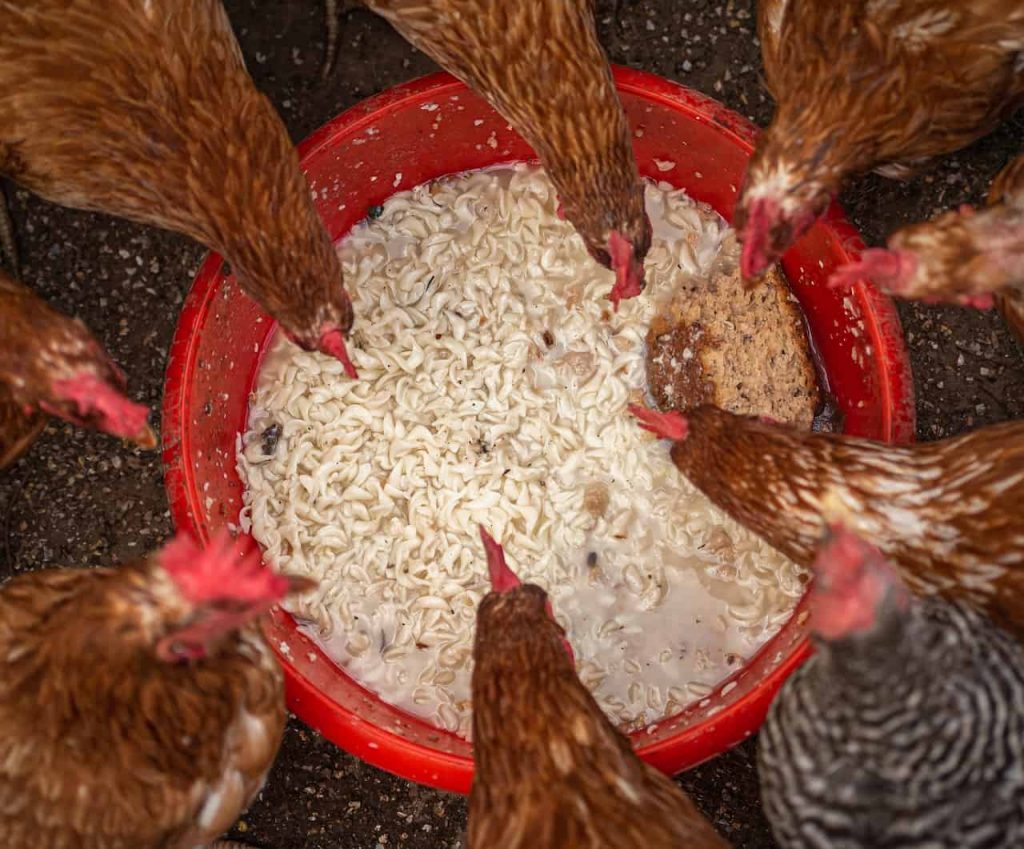
This is the easy bit. Chickens really are not fussy when it comes to food and drink. They will eat almost any commercial feed and pellets you give them. And they love scratching around in the yard munching on grass, weeds, bugs, and slugs.
Bear in mind they will scratch the earth to bare soil. If they are kept in a run you will want to be able to move the run around so the birds keep getting some fresh grass. This also gives the previous area time to recover.
A good layers mash, a feed designed for laying chickens, should form the bulk of the food. This will be available from your local feed store and will have all the nutrients they need. The only problem here is, there will be a bewildering range to choose from!
Different feed types can be chosen, depending on the age of your birds, their general health, and what else you feed them. You can buy it as mash or pellets. Maybe try a couple of different types and see what your birds prefer. Get advice from the feed store staff if you are not sure what you need.
Your birds will also love some leftovers from the kitchen. Cabbage leaves and other leafy greens, pumpkin, watermelon, pears, and some berries make tasty treats. But nothing moldy or off. And not too much bread as this can make them put on weight.
However, current advice is not to give citrus fruit, avocado, onion, or chocolate. But I never share my chocolate anyway!
Chickens should always have access to some grit. They keep this in their gizzard to help break down and digest food. They may get enough from the dirt in your yard, and it can be included in commercial food. It is also available as a specific supplement.
Water, just like it is for us humans, is vital to chickens. They need easy access to plenty of good, clean water. A grown chicken will need about a cup of water a day.
There are automatic chicken waterers available from country stores and online. These can be topped up by hand and last a few days before requiring a refill. Or they can be connected to the water supply and fill up on their own when needed.
Just remember the water must be clean and fresh. Check the water regularly to make sure everything is working, no algae is growing and there isn’t any poop in it. I told you nothing was sacred!
You will need to make sure that open water containers are not too deep. Young chicks can fall in and drown. And some birds may need training with new, automatic waterers. Dip their beak into the water cup a couple of times. They should soon get the hang of it. And make sure the water is reachable by chickens both big and small.
So, find a good commercial feed that your birds love, chuck them some scraps and treats from time to time, make sure they have plenty of fresh clean water. They will be happy and healthy and laying eggs like never before.
How much work is involved?
It is safe to say, the more work you put in, the more reward you get. Raising chickens does require quite a bit of work, but it gets easier as you go along and get more experienced. You will soon get into a routine and find it fairly quick and easy.
Every morning you will need to let the hens out. They have been cooped up all night and will be eager to get out and about. You will probably hear them clucking impatiently as you approach. A rooster will certainly let you know when it’s time!
Once they’re out and scratching around give each bird a quick once-over. Look for any sign of tiredness, feebleness, wilting comb, or injury. Bright eyes, bright feathers, and a perky walk are all good signs.
Check the food and water. Clean out and refill as necessary.
And then the fun bit – check the nest boxes for eggs! This bit is sure to bring a smile to your face as you walk back to the house with a bowl of fresh eggs.
During the day your birds will be happy to strut around pecking at the grass and looking for food. Free-range birds will explore but shouldn’t stray too far. Keep an eye out if you live near a road. A few scraps of food treats in the afternoon should keep them around the coop.
The birds will probably take themselves back to the coop for roosting around dusk. Or you may need to give them an encouraging shooing. A bit of food will help if needed.
Make sure the door is closed and properly locked and that the coop is ventilated as required by the weather. You can also check for any eggs laid during the day.
And remember, they don’t always lay in the boxes. They may find a nice spot under a hedge, in the garage, round the back of the coop. In fact, almost anywhere! Have a regular look round in likely spots. Especially if egg production has dropped but all the birds are present and healthy. One may have found somewhere else to lay.
Once a week a full clean should be done. Maybe more often if you have a high number of birds in the coop. Take out the dirty litter and clean the tray or bottom of the coop. Wipe down the roosting bars, feeder, and waterer. And remember to replace the bedding in the nest boxes.
As you get to know your birds these jobs will get quicker and easier. Your birds will get into the routine just as much as you will.
Hang on, can I ask a question?
Do I need a rooster?
No, not unless you want baby chicks. Female chickens lay eggs all on their own. They only need a rooster to fertilize an egg and have baby chicks.
What if my chicken gets broody?
Broody is a word that describes a hen sitting all day on her eggs. She will be very protective and may try to peck you when you try to take her off. Under normal conditions, a hen would sit on fertilized eggs for three weeks until they hatch. Sometimes a bird gets it into her head that she is sitting on fertilized eggs when she isn’t. Try to take her off a couple of times every day to eat and drink and get some exercise. Take the eggs away. Be firm with her. She will get over it, but it may take a few weeks and they can lose condition until they snap out of it.
Are chickens safe for my children?
As with all animals, hands should be washed before and after handling them to prevent any transfer of infection from either party. Chickens can have salmonella and E. Coli. Use an alcohol-based cleaner or hand gel to prevent infection.
I have other pets, will the chickens be OK with them?
Dogs and cats can exist in harmony with your new flock of feathery friends. You may need to supervise the first few visits, maybe using a lead and keeping a close eye. Some breeds will cohabit better than others. If the first couple of meetings doesn’t go well, it is likely it will not work out.
How long will my eggs last before I have to eat them or throw them?
Eggs should be collected daily and kept in a date order system, so the oldest gets eaten first. They should last 4 to 5 weeks at normal room temperature, and a bit longer on the refrigerator. The eggs should be clean, or fairly clean, straight out of the nest box. Eggs should not be washed unless maybe you’re giving them away. If washed, they don’t last as long. And a bit of dirt and straw makes them look even more homegrown and natural!
And finally,
Well, there you have it. The essential guide to raising your own chickens. All you need to know to get started and enjoy the wonderful world of friendly feathered friends and wholesome, homegrown eggs.
Armed with this knowledge you can safely make your way to the country store or chicken breeder and start this amazing journey.
The staff at the store will be able to advise in more detail about the right breed for your area, the right food, and the best healthcare for your birds. But hopefully, you now know enough to work out if keeping chickens is right for you.
You can work out how many birds and what breeds you want, what size coop and run they will need, and what to feed them.
Keep them healthy, clean, and safe, and they will become great pets. They will reward you with colorful fresh eggs on your plate, and with enough funny antics and peculiar behavior to put many a smile on your face.

